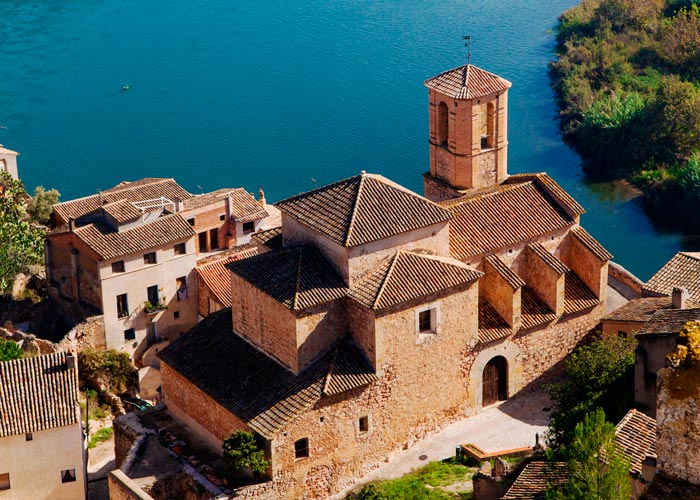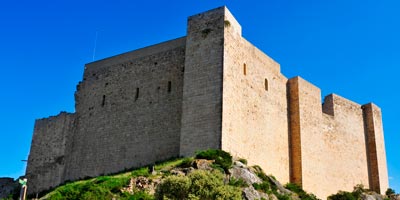Iglesia Vieja
Later on, a new temple was built in the centre of the present town, now known as the Iglesia Vieja. From the year 1565-1585, it is an interesting temple to see in Miravet. It was built on the initiative of the Military Order of the Hospital de San Juan. It was built in the same place where there was a Muslim mosque. All that remains is to enjoy its beautiful proportions, its Romanesque altar from the Templar period, some wall paintings and the sgraffito decoration. The latter was possibly carried out by the local Moors.
There are no more because they sacked the building in July 1936. It was seriously damaged during the fighting that took place there between the spring and autumn of 1938, so they abandoned it. Inside, there are currently several exhibitions on Miravet’s rich ceramic tradition. It is also a permanent reminder of what the Spanish Civil War meant for this strategic territory.
The Ebro River through Miravet
One of the attractions to be seen in Miravet is the crossing of the mighty Ebro River via the Paso de Barca or traditional ferry that operates without an engine. Thanks to the boatman’s ability to handle the current.
Every second Sunday in June, the town council celebrates the Cherry Festival, a product of excellent local gastronomy. It is mixed with leisure activities and exhibitions of local pottery. An excellent plan to do in Miravet.
The terrible battle of the Ebro had in this region one of its most epic fronts, being able to visit many of the most impressive places. In Pinell del Brai there is the Visitor’s Centre Las Voces del Frente on the role of the media in the conflict.
Surrounding areas
In the neighboring mountains of Pandolls and Caballs is the bloody level 705. Here is the Monument to “La Quinta del Biberón” of the Republic. There are also the fortifications built by the Republicans during the summer of 1938.
In the next town of Gandesa is the Visitor’s Centre of the Battle of the Ebro. In the Coll del Moro the observation post of General Franco, in the second part of the battle. Finally, in the town of Vilalba dels Arcs is the Monument to the Tercio de Montserrat, the famous Franco’s unit. It was the one that suffered the most casualties among all those who fought in the war.
It is interesting to go to the neighbouring village of Benifallet to see the Cave of Marevelles. Be careful not to get confused, as there are others of the same name in other provinces. We recommend looking at the opening hours first. Nearby you can also take boat trips on the river and do some bird watching.
Another very interesting place to see in the surrounding area of Miravet is the Iberian village of Castellet de Banyoles. It is located near the C-12 road, past the village of Ginestar.





